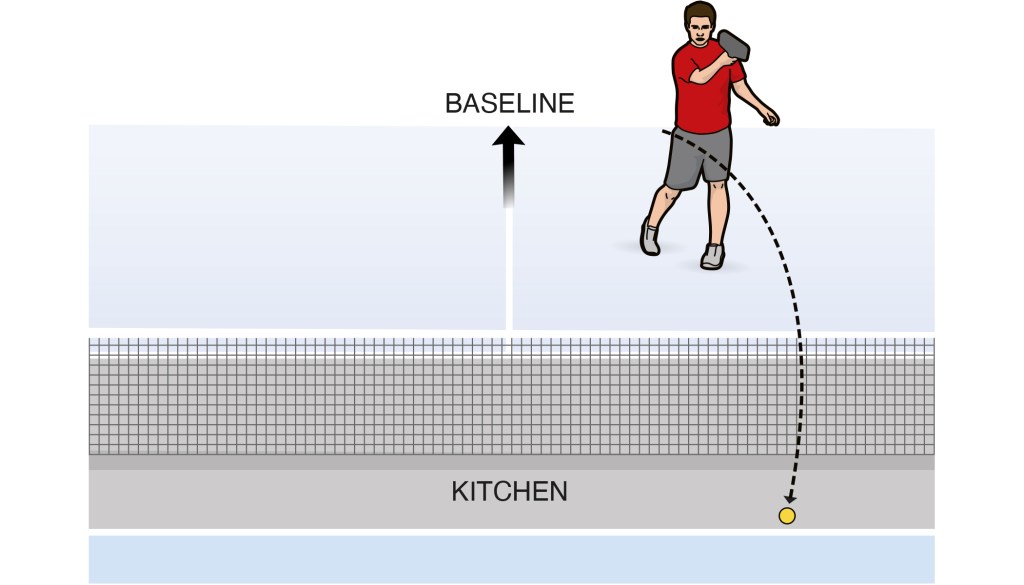Put A Spin On It
inpickleballme
on
September 12, 2022

PUT A SPIN ON IT
The more advanced you become as a player, the more you’ll need to use spin. Ultimate Pickleball Academy founder Michelle Esquivel has a drill to help you do it right.

GIVING THE BALL some backspin can help you guide the pace of the game and defend against opponents who slice and dice, says pro pickleball player and coach Michelle Esquivel, founder of the Ultimate Pickleball Academy in Naples, Florida. The technique is especially helpful for intermediate players, but even beginners who have been at it for a while can give it a shot.
Unlike topspin—which is used in serves and drives to give the ball more forward rotation so that it rises up quickly and bounces—backspin slows the ball down and keeps it low, making it difficult for your opponent to attack, Esquivel says. To create backspin, you need to make contact with the ball from underneath, “which slows things and allows you to reset,” Esquivel explains. In other words, backspin helps you take charge, which can allow you more time to respond to the next shot, and hopefully gain an advantage over your opponent. The more advanced you become as a player, the more you’ll want to use this kind of spin, Esquivel says. “It gives you more tools in your game.”
In order to master backspin, you need to practice making that beneath-the-ball contact, which means hitting it from the bottom. On dinks, Esquivel encourages the players she instructs to aim shallow in order to slow the game down. Once you feel comfortable about using backspin, you can pull out the shot whenever you want to reset during a game.

Here, Esquivel shares with us her “Slinky” drill, in which a player slinks back and forth between the non-volley zone and the baseline as they practice backspin. These steps can help you spin for the win.
MICHELLE ESQUIVEL is a pro pickleball player and top APP competitor (currently ranked as one of the top 5 female players) who founded the Ultimate Pickleball Academy in Naples, Florida.
CREATE BACKSPIN
1
MASTER THE SETUP

Start at the kitchen line. Hold your paddle loosely: “On a scale of 1 to 10, with 10 being the death grip, you want to be around a 3 or a 4 because you’re trying to take pace off the ball,” Esquivel says. “You don’t want it to go too fast.” Meanwhile, your partner should get under the ball with their paddle so that each shot they feed you is more of a push, Esquivel says. This will enable you to easily practice your spin returns. Use targets so the feeder knows where to aim. Ideally, each ball should be a few feet farther than the previous one.
2
RESET AND SLINK

As your partner serves you balls, use underspin on your dinks to return them, trying to hit with purpose, while gradually working your way back to the baseline. Your goal is to drop the ball into the kitchen, which gets more difficult the farther back toward the baseline you go.
3
FOCUS ON REPETITION

In creating underspin, you need to stay consistent, so you can see how many balls you can reset into the kitchen in a row, Esquivel says. Hit three to five balls, take a few steps back, hit three to five more, take a few more steps back, hit three to five more. The idea is to do it the same way every time. When you’re performing a drill, the technique should always be the same.
4
PRACTICE RESTRAINT

With backspin, players sometimes pull the paddle all the way back to compensate for the distance, which means the ball goes too short or too long, Esquivel says. Also, once they reach the baseline, some players start hitting off their back foot, or using their wrist to follow through, rather than their shoulder. Instead, get your paddle in front and meet the ball there, just as you would if you were closer to the kitchen. “I call what you need to do CAP—consistency, accuracy, and patience,” Esquivel says.
- Category: Articles, In-Struction, ON THE COURT
- Tag: #putaspinonit, Backspin, Howto, In-Struction, Inpickleball, Instruction, Onthebounce, Pickleball

